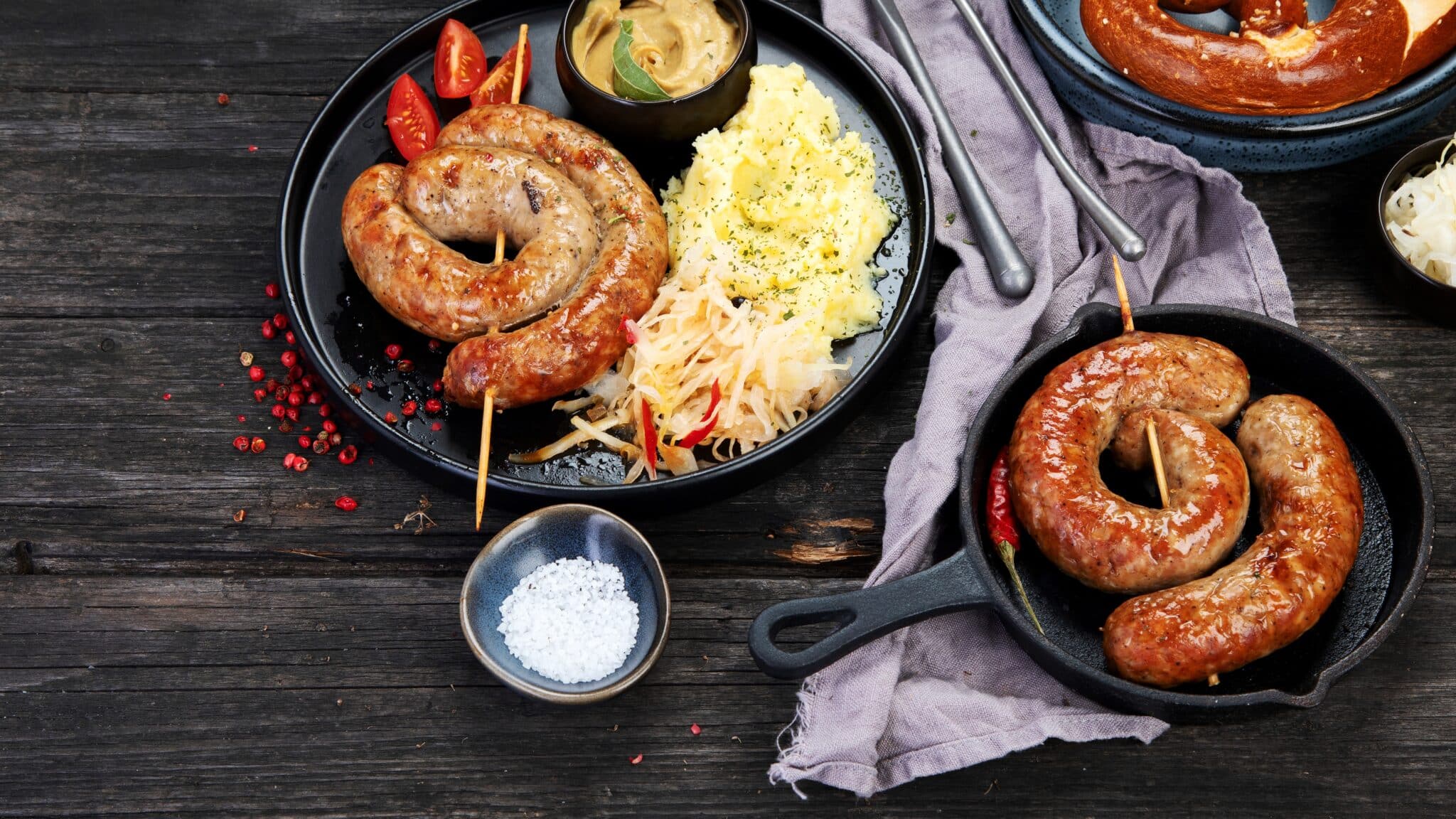
Sauerkraut and sausages, a beloved dish of Germany, is a culinary delight that has stood the test of time. This combination of fermented cabbage and meaty sausages is more than just food—it’s a symbol of German culture and history.
Our team at Remitly created this guide as part of our series that celebrates the cuisine of our customers around the world.
The History of Sauerkraut in Germany
Sauerkraut, literally translated as “sour cabbage”, has been an integral part of German cuisine for centuries. It was first introduced by nomadic tribes who discovered that fermenting cabbage allowed it to be preserved for longer periods. This was particularly useful during harsh winters when fresh produce was scarce.
The popularity of sauerkraut grew over time, becoming a staple in German households, and a cherished dish in neighboring countries. Its tangy flavor and nutritional benefits made it a favored addition to meals. Meanwhile, its long shelf life proved invaluable during times of scarcity or travel.
The Role of Sausages in German Cuisine
Sausages are a significant part of German cuisine. With over 1,500 types recorded across the country, they are often used as an accompaniment to other dishes or enjoyed on their own with bread and mustard.
The variety is astounding—from Bratwurst to Weisswurst, each region boasts its own specialty sausage. These regional differences reflect not only variations in taste but also the unique histories and traditions embedded within each locale.
A Simple Recipe for Sauerkraut and Sausages
Preparing sauerkraut and sausages at home is a straightforward process. Here’s a simple recipe to help you recreate this classic German dish in your own kitchen.
Ingredients:
- 4 German-style sausages (Bratwurst or Weisswurst)
- 2 cups of sauerkraut
- 1 tablespoon of vegetable oil
- 1 medium onion, thinly sliced
- 2 cloves of garlic, minced
- Salt and pepper to taste
- Dark bread or boiled potatoes for serving
Instructions:
- Heat the vegetable oil in a large pan over medium heat.
- Add the sausages to the pan and cook until browned on all sides. Remove from the pan and set aside.
- In the same pan, add the onions and garlic. Cook until they become translucent.
- Add the sauerkraut to the pan with onions and garlic, stirring well to combine.
- Season with salt and pepper according to your preference.
- Return the sausages to the pan, nestling them into the kraut mixture.
- Cover and simmer for about 20 minutes, allowing flavors to meld together.
- Serve hot with dark bread or boiled potatoes.
How to Enjoy Sauerkraut and Sausages at Home
Enjoying this classic German dish at home is simpler than you might think. Both sauerkraut and various types of German sausages are readily available in most supermarkets worldwide.
To prepare your meal, simply heat your chosen sausage in a pan before adding your kraut. Allow both components to warm through before serving alongside your chosen sides—be it bread, potatoes or even just a hearty dollop of mustard.
Variations of the Dish Across Germany
Across Germany, variations of sauerkraut and sausages abound. In the south, you’ll find dishes like “Sauerkraut mit Weisswurst”, where white sausage is paired with sauerkraut. Meanwhile, in the north, “Kasseler mit Sauerkraut” features smoked pork cutlets served with sauerkraut.
These regional differences highlight the diversity within German cuisine. They also underscore how food can serve as a reflection of local culture and history.
Pairing Suggestions for Sauerkraut and Sausages
When it comes to pairing sauerkraut and sausages, there are no hard-and-fast rules. However, some popular choices include dark breads like rye or pumpernickel, which complement the tangy flavor of the kraut well.
For beverages, beer is often favored—its bitterness balancing out the richness of the sausage and acidity of the kraut. Alternatively, a glass of Riesling or other dry white wines can also make for an enjoyable accompaniment.
Popular Events Featuring Sauerkraut and Sausages
Sauerkraut and sausages feature prominently in many German festivals such as Oktoberfest—a world-renowned event that celebrates Bavarian culture with music, traditional attire, and plenty of food.
Similarly, local food markets and fairs often showcase a variety of sausages and kraut dishes, allowing visitors to sample the breadth of German culinary tradition in one place.
Impact of Globalization on the Popularity of Sauerkraut and Sausages
Globalization has undoubtedly played a role in spreading the popularity of sauerkraut and sausages beyond Germany’s borders. Today, this dish is enjoyed worldwide, with adaptations reflecting local tastes and ingredients.
Despite these changes, the essence of this classic German dish remains—the combination of tangy sauerkraut and hearty sausage continues to be appreciated for its simplicity, flavor, and connection to German culture.
The Broader Cuisine of Germany
German cuisine is as diverse as its regions—each area boasting its own unique dishes that reflect local traditions, ingredients, and tastes.
Northern Germany
In Northern Germany, seafood plays a significant role due to its proximity to two seas—the North Sea and Baltic Sea. Dishes like “Fischbrötchen”, a fish sandwich often enjoyed as street food, are popular here.
Central Germany
Central Germany is known for hearty fare like “Sauerbraten”, a pot roast usually made from beef but can also be prepared with venison or pork. It’s marinated before being slow-cooked, resulting in a tender and flavorful dish.
Southern Germany
Southern Germany, particularly Bavaria, is famous for its beer and sausages. Pretzels are also a staple here, often enjoyed with “Obatzda”, a spiced cheese-butter spread.
Eastern Germany
Eastern German cuisine reflects influences from neighboring countries like Poland and the Czech Republic. “Eisbein”, or pickled ham hock, is a well-known dish from this region.
Despite these regional differences, common threads run through German cuisine—heartiness, simplicity, and an emphasis on quality ingredients. Whether it’s sauerkraut and sausages or Sauerbraten and pretzels, German food offers something for everyone to enjoy.
Visit the homepage, download our app, or check out our Help Center to get started.
